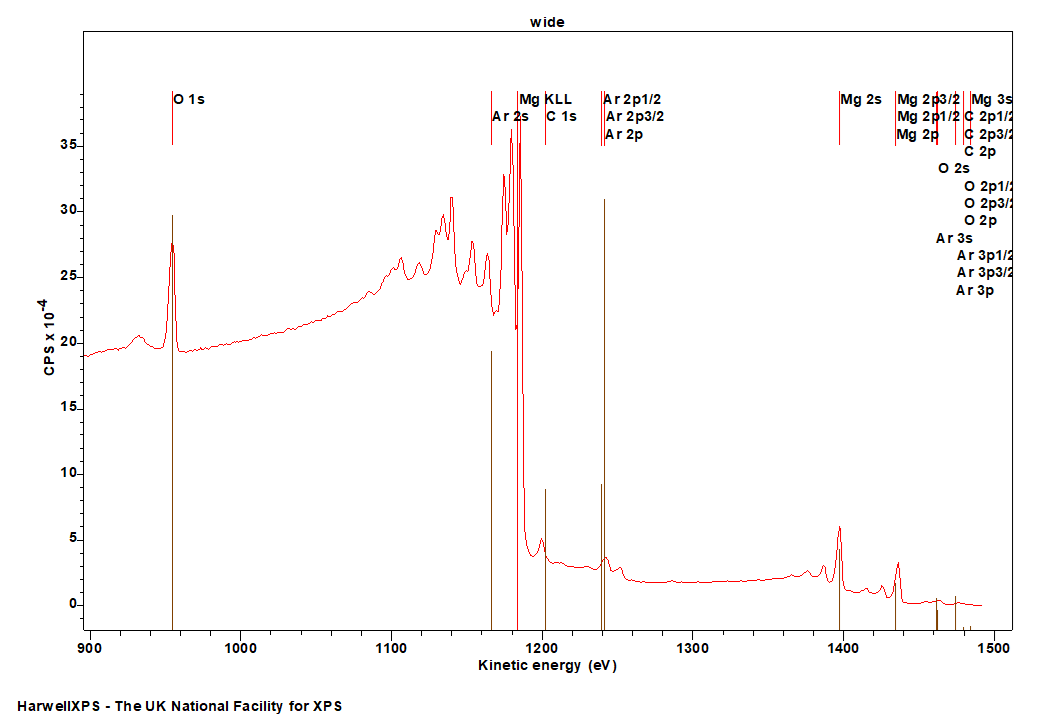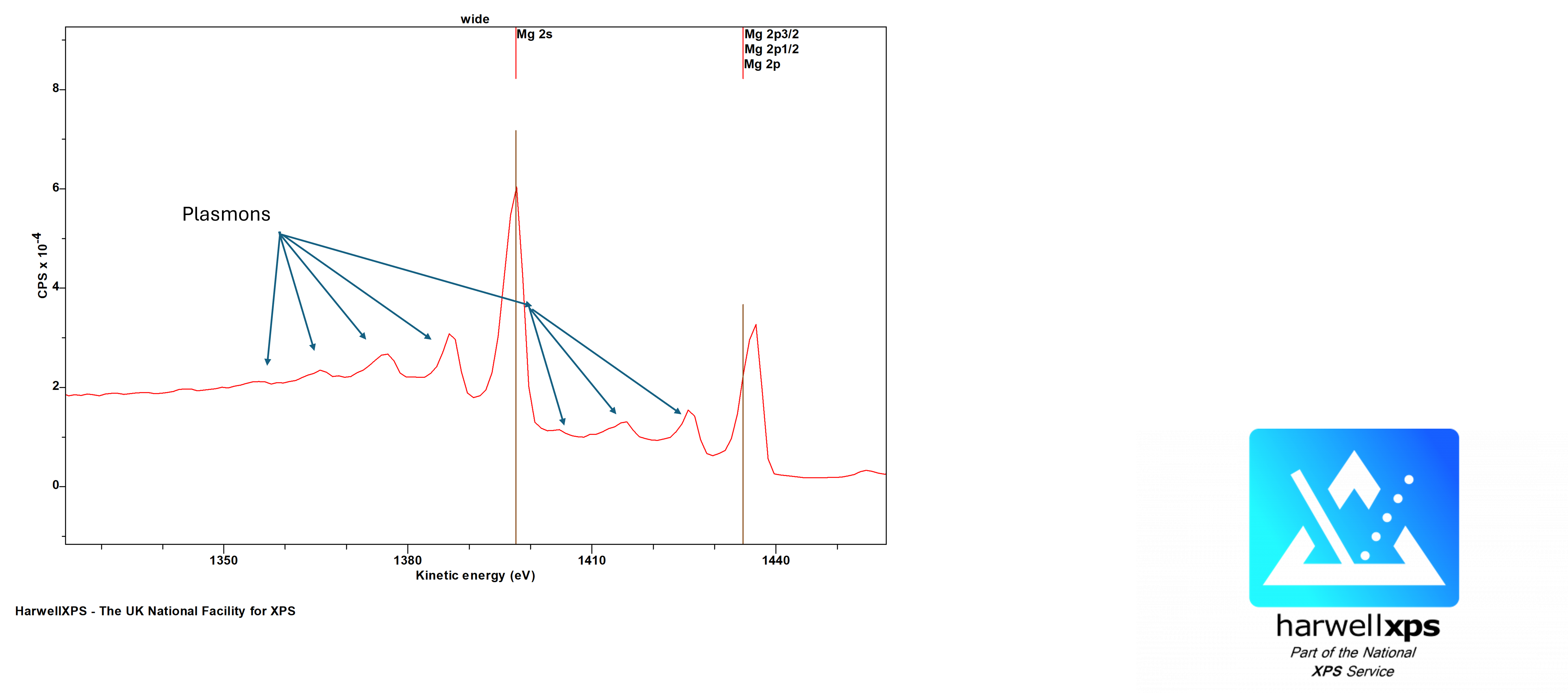
Magnesium
Doublet Separations
- Mg 2p: 1.2 eV
The Energies Listed are Binding Energies!
- Mg 1s: 1305 eV
- Mg 2s: 90 eV
- Mg 2p: 52 eV

The Energies Listed are Binding Energies!
Mg 2p
- Rh 4p (48 eV)
- Mn 3p (49 eV)
- I 4d (50 eV)
- Os 4f (50.7 eV)
- Pd 4p (51 eV)
- Pt 5p (51 eV)
- Ho 5s (51 eV)
- Zr 4s (52 eV)
- Tm 5s (53 eV)
- Sc 3s (54 eV)
- Au 5p (54 eV)
-

Mg 2p spectra of cleaned Mg metal with native oxide layer identifying peak overlaps Ag 4p (56 eV)
Mg 1s
- Ga 2s (1299 eV)
- Mo MNV (Al source) (1300 eV)
- Cl MNN (1305 eV)
Energies listed are Kinetic Energies!
Mg KLL: ~ 1180 eV
Magnesium does not exhibit any atypical properties in it’s XP spectra.
Magnesium metal exhibits strong plasmon peaks.

Magnesium is often analysed by either the Mg 1s, or Mg 2p regions, giving easy access to very surface sensitive (Mg 1s), and deeper (Mg 2p), photoelectrons.
If using Al ka X-rays, an extended C 1s region may be helpful in correct assignment of higher energy C 1s species due to the large overlap of C 1s with Mg KLL.

Mg 2p has a very small doublet separation, to the point that it is not uncommon for analysts to use a single peak to describe the doublet state.

Not available
Not available
- Jérôme, Robert, et al. “Surface analysis of polymers end-capped with metal carboxylates using X-ray photoelectron spectroscopy.” Applied surface science 27.1 (1986): 93-105. Read it online here.
- Wagner, C. D. “Studies of the charging of insulators in ESCA.” Journal of Electron Spectroscopy and Related Phenomena 18.3 (1980): 345-349. Read it online here.
- Haider, N. C., J. Alonso Jr, and W. E. Swartz Jr. “Valence and core electron spectra of Mg in MgO in evoporated thin films.” Zeitschrift für Naturforschung A 30.11 (1975): 1485-1490. Read it online here.